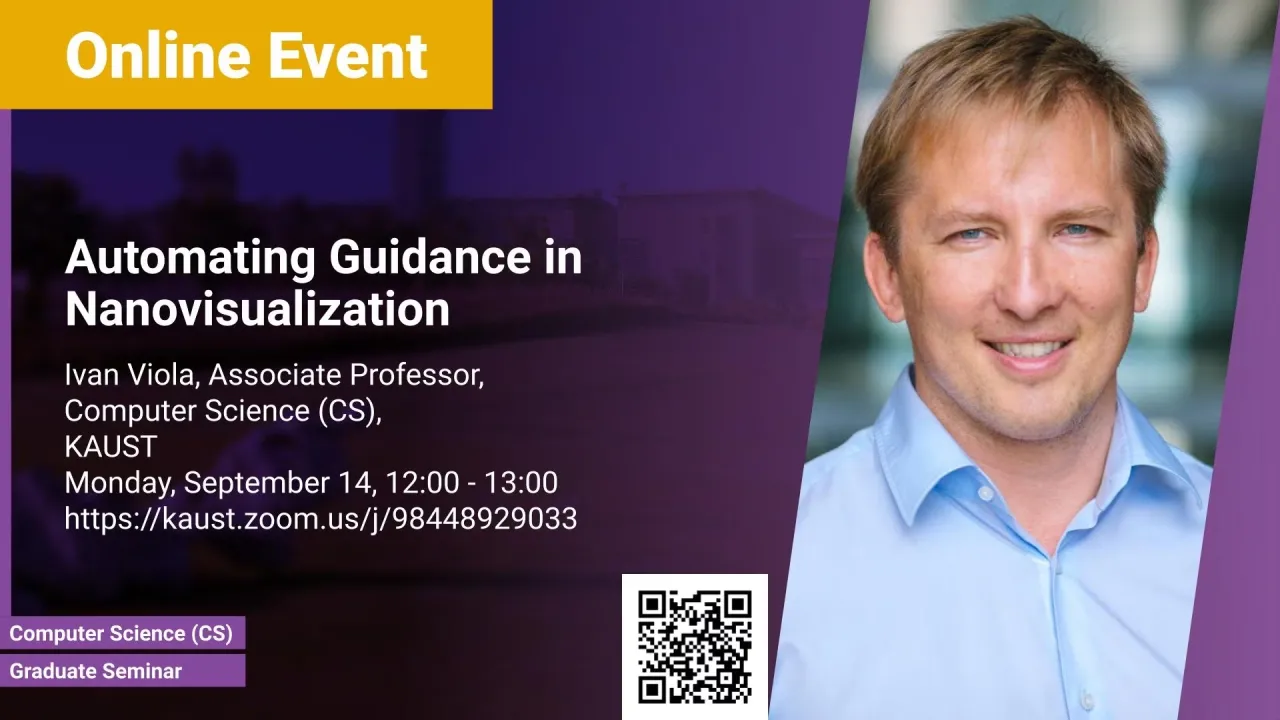
Automating Guidance in Nanovisualization - Graduate Seminar
KAUST
Research in visualization and computer graphics has developed techniques to geometrically model objects from our everyday life, or from various branches of industry and science, including modeling life-forms that are of submicron in size. These are not visible to the naked eye and most of us are unfamiliar with structures that form life organized in an assembly of biomolecules. Here visualization techniques can be of tremendous help to guide the viewers to familiarize themselves with what they see and make the engaging visual exploration of these complex structures to an intellectual enrichment.
Overview
Abstract
Research in visualization and computer graphics has developed techniques to geometrically model objects from our everyday life, or from various branches of industry and science, including modeling life-forms that are of submicron in size. These are not visible to the naked eye and most of us are unfamiliar with structures that form life organized in an assembly of biomolecules. Here visualization techniques can be of tremendous help to guide the viewers to familiarize themselves with what they see and make the engaging visual exploration of these complex structures to an intellectual enrichment.
During my seminar, I will present three levels of visual guidance. On the first level, the viewers are interactively exploring the 3D submicron visual environment, while what they see is tagged with textual annotations naming the structures they observe. On the next level, in addition to the annotations, the viewers select structures they are interested in and the camera automatically navigates the viewers to the structures of interest. On the third level, the viewers are offered an even more passive role, where the automated algorithm guides them through the scene in a certain logical order, derived from the structural composition. Visual information is augmented with textual descriptions automatically harvested from the online encyclopedia or other available knowledge resources. Another input for guidance can be a biologist-written screenplay, which is automatically synchronized with 3D visualization to visually communicate the engaging story about the biological structures. This seminar talk will focus on explaining techniques and algorithms that enable these three levels of visual guidance.
Brief Biography
Ivan Viola is an Associate Professor at King Abdullah University of Science and Technology (KAUST), Saudi Arabia. In his research, Viola investigates methods that automate the visualization design process.
Basal new technologies he then applies to various application domains, such as ultrasound diagnostics, geology, or submilimeter biology.
Viola has graduated from TU Wien, Austria in 2005 and moved for postdoctoral fellowship to the University of Bergen, Norway, where he was gradually promoted to the rank of Professor. In 2013 he has been awarded a Vienna Science and Technology Fund grant to establish his own research group back at TU Wien, Austria. After several years of research on visualization and computer graphics techniques for conveying multiscale biological structures in Vienna, Viola has co-founded the startup company called Nanographics, to commercialize nanovisualization technologies. He has joined KAUST to multiply his investigative efforts, for delivering technologies that make visual, in-silico life possible.
